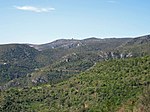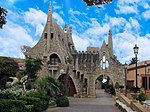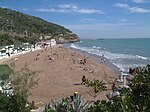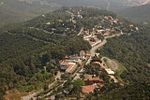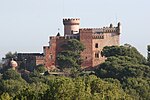Castelldefels Castle (Spanish: Castillo de Castelldefels; Catalan: Castell de Fels) is a frontier fortress in the town of Castelldefels, near Barcelona in Spain, that was built to defend the frontier of the Carolingian Empire against neighbouring Muslim territories, particularly the Caliphate of Córdoba. The fortress was first recorded in the 10th century, as was the former parish church of St. Mary, contained within its outer wall.The castle occupies a hilltop to the northeast of the modern town centre and the castle complex includes the castle keep, a church, associated outbuildings, and a cemetery, all contained within a curtain wall. The hill was first occupied in ancient times and archaeologists have excavated remains of a Laietani settlement dating from the 3rd to the 1st century BC, and a Roman villa dating from the 1st to the 6th century AD. The castle was first recorded in AD 967, and by the 14th century a fortified house existed with a strong curtain wall. The church was also fortified in the 14th century. The castle as it stands today was largely built in the 16th century as a response to the expansion of the Ottoman Empire.
The castle had largely fallen into ruin by the second half of the 19th century, although the church continued in use as the local parish church. In 1893 a notorious murder took place in the rectory when a young baker broke in and murdered the parish priest and his niece. The murderer was soon caught, and was executed outside the castle walls in 1895. Soon afterwards the castle was purchased by a wealthy Barcelonan banker, who refurbished it and added decorative crenellations throughout. In the early 20th century the parish church was moved to its current location and the castle church was refurbished as a family chapel. The castle again achieved notoriety during the Spanish Civil War when the International Brigades used it as a disciplinary prison camp, with resulting executions and torture.


